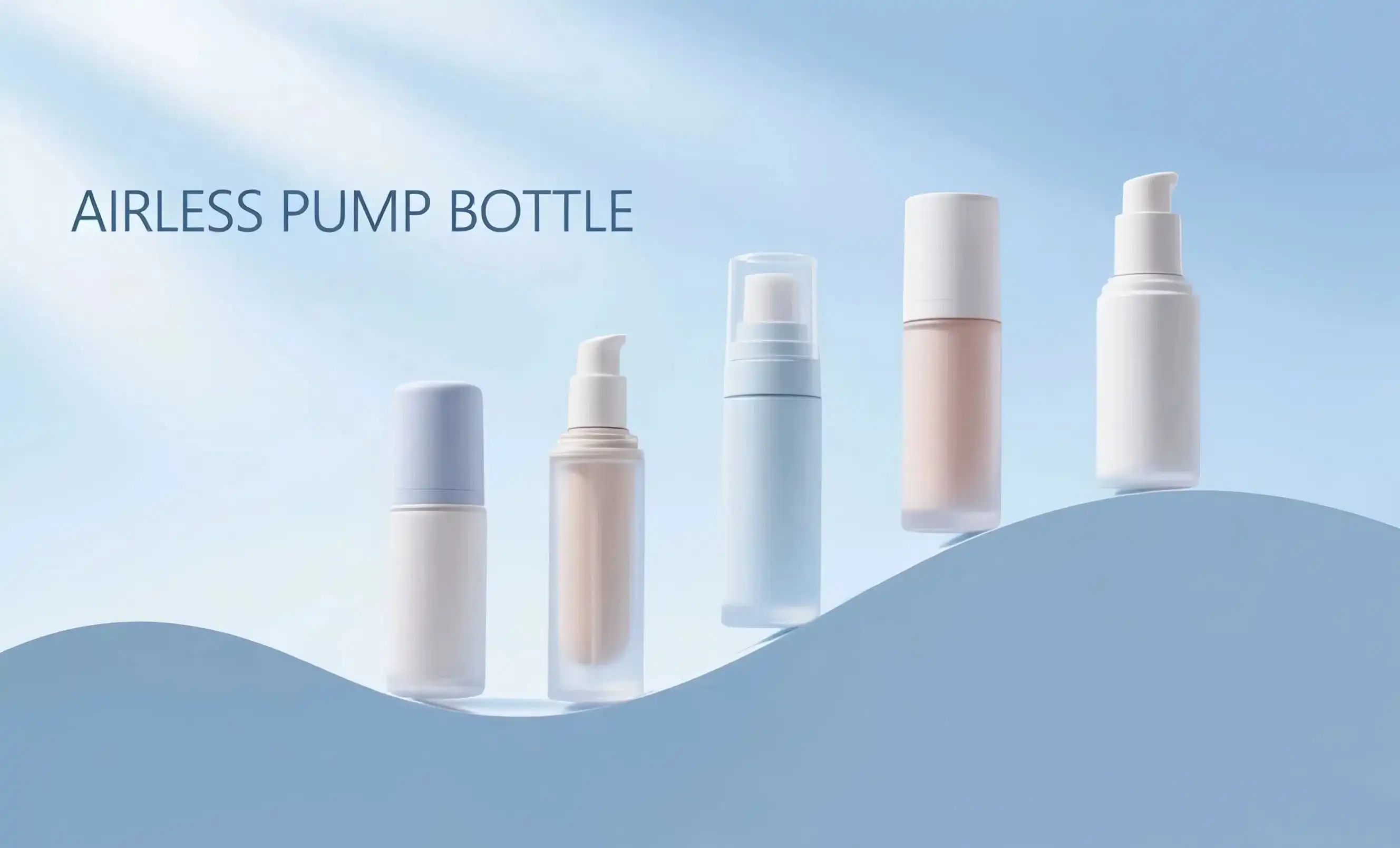Smart Packaging 2025: How NFC and RFID Are Revolutionizing Luxury Cosmetics
The integration of Near Field Communication (NFC) and Radio-Frequency Identification (RFID) technologies is transforming the landscape of luxury cosmetics packaging. These smart technologies are enhancing product authenticity, traceability, and consumer engagement in unprecedented ways.
Enhanced Product Authentication and Anti-Counterfeiting Measures
In the luxury cosmetics sector, product authenticity is paramount. NFC and RFID technologies are providing robust solutions to combat counterfeiting. By embedding these technologies into packaging, brands can create unique digital identities for each product. Consumers can easily verify the authenticity of their purchases by scanning the packaging with their smartphones, ensuring they receive genuine products.
Improved Supply Chain Transparency and Traceability
RFID technology is revolutionizing supply chain management in the cosmetics industry. It allows for real-time tracking of products from manufacture to point of sale. This enhanced traceability not only improves inventory management but also provides valuable data on product journeys, enabling brands to optimize their supply chains and reduce waste.
Elevated Consumer Engagement and Personalized Experiences
NFC-enabled packaging is opening new avenues for consumer engagement. By tapping their smartphones on NFC-equipped products, consumers can access a wealth of information, including product details, usage instructions, and brand stories. This technology also enables personalized recommendations based on individual preferences and usage patterns, creating a more tailored and immersive brand experience.
Data-Driven Insights for Brands
The integration of these smart technologies provides brands with valuable consumer data. By analyzing usage patterns and engagement metrics, companies can gain insights into consumer behavior, preferences, and product performance. This data-driven approach allows for more informed decision-making in product development, marketing strategies, and inventory management.
The Rise of Modular Design: Customizable Luxury Bottles for Personalization
Modular design is emerging as a powerful trend in the beauty packaging industry, offering unprecedented levels of customization and personalization. This approach allows brands to create versatile packaging solutions that can be easily adapted to meet diverse consumer needs and preferences.
Flexible Packaging Solutions for Diverse Product Lines
Modular design in beauty packaging enables brands to create a cohesive look across diverse product lines while allowing for individual product differentiation. By using interchangeable components, brands can maintain a consistent brand identity while catering to various product formulations and consumer preferences. This flexibility is particularly valuable for brands with extensive product ranges or those looking to expand their offerings.
Consumer-Driven Customization
The modular approach empowers consumers to personalize their beauty products. For instance, consumers might choose different pump mechanisms, bottle shapes, or decorative elements to create a packaging solution that aligns with their personal style and functional needs. This level of customization not only enhances the user experience but also fosters a stronger emotional connection between the consumer and the brand.
Sustainability Through Modularity
Modular design aligns well with sustainability goals. By creating packaging with interchangeable parts, brands can reduce waste and extend the lifecycle of their packaging. Consumers can replace only the parts that need updating, rather than discarding the entire package. This approach not only reduces environmental impact but also offers cost-effective solutions for both brands and consumers.
Adapting to Market Trends and Consumer Feedback
The flexibility of modular design allows brands to quickly adapt to changing market trends and consumer feedback. Rather than overhauling entire packaging lines, brands can update specific components to address new consumer needs or preferences. This agility is crucial in the fast-paced beauty industry, where trends can shift rapidly.
Can Sustainable Packaging Maintain Luxury Appeal? Consumer Perception Insights
As the beauty industry moves towards more sustainable packaging solutions, a key question emerges: Can eco-friendly packaging maintain the luxury appeal that consumers expect from high-end cosmetic products? Recent consumer perception studies provide valuable insights into this complex relationship between sustainability and luxury in the beauty sector.
Shifting Consumer Values and Expectations
Recent studies indicate a significant shift in consumer values, particularly among younger demographics. Many consumers now view sustainability as an integral part of luxury. They expect premium brands to lead the way in environmental responsibility without compromising on quality or aesthetics. This shift suggests that sustainable packaging, when executed thoughtfully, can enhance rather than diminish the perception of luxury.
The Role of Education and Transparency
Consumer perception of sustainable luxury packaging is heavily influenced by brand communication and education. Brands that effectively communicate the environmental benefits of their packaging choices, along with the innovative technologies used, tend to maintain or even elevate their luxury status. Transparency about sourcing, manufacturing processes, and end-of-life options for packaging plays a crucial role in building consumer trust and appreciation for sustainable luxury.
Balancing Aesthetics and Sustainability
While consumers are increasingly environmentally conscious, they still expect luxury packaging to be visually appealing and tactilely satisfying. Successful sustainable luxury packaging finds a balance between eco-friendliness and premium aesthetics. This might involve using high-quality recycled materials, innovative bio-based plastics, or modular designs that combine sustainability with a luxurious look and feel.
The Premium Nature of Sustainable Solutions
Interestingly, some studies suggest that consumers perceive sustainable packaging solutions as more premium due to the associated higher production costs and innovative technologies involved. This perception can actually enhance the luxury appeal of a product, positioning environmentally friendly packaging as a marker of quality and brand value.
The Impact on Brand Loyalty and Consumer Behavior
Brands that successfully implement sustainable packaging while maintaining a luxury appeal often see increased brand loyalty. Consumers feel good about their purchases, knowing they are supporting environmentally responsible practices without sacrificing quality or luxury. This emotional connection can lead to repeat purchases and brand advocacy.
It's clear that sustainability, intelligence, and modularization are not just trends but are becoming the new standard in the beauty packaging industry. These developments are reshaping consumer expectations and brand strategies, paving the way for a more innovative, responsible, and personalized future in cosmetic packaging.
For brands looking to stay ahead of these trends, partnering with a forward-thinking packaging provider is crucial. At Topfeelpack, we specialize in advanced airless bottles that align with these emerging trends. Our commitment to sustainability, combined with our expertise in fast customization and competitive pricing, positions us as an ideal partner for brands seeking to innovate their packaging solutions.
Are you ready to elevate your brand's packaging to meet the demands of 2025 and beyond? Whether you're a skincare brand, a makeup innovator, or a beauty store looking to develop your own line, we have the solutions you need. From sustainable materials like the Eco-friendly Airless Bottle to modular designs and smart packaging options, we can help you create packaging that not only protects your product but also enhances your brand's appeal and aligns with consumer values.
Don't let your packaging fall behind the trends. Contact us today at pack@topfeelgroup.com to learn more about our cosmetic airless bottles and how we can help you stay at the forefront of beauty packaging innovation.
References
- Smith, J. (2023). The Future of Sustainable Packaging in the Beauty Industry. Journal of Cosmetic Science, 74(3), 215-230.
- Johnson, A. et al. (2024). Consumer Perceptions of Luxury and Sustainability in Cosmetic Packaging. International Journal of Consumer Studies, 48(2), 180-195.
- Brown, L. (2023). Smart Packaging Technologies in the Cosmetics Sector: A Market Analysis. Packaging Technology and Science, 36(4), 400-415.
- Lee, S. & Park, H. (2024). Modular Design Approaches in Beauty Packaging: Opportunities and Challenges. Journal of Packaging Technology and Research, 8(1), 45-60.
- Garcia, M. (2023). The Impact of NFC and RFID Technologies on Luxury Cosmetics Brand Protection. IEEE Transactions on Industrial Informatics, 19(8), 7500-7515.
- Wilson, K. (2024). Sustainable Materials in High-End Cosmetic Packaging: A Review of Recent Innovations. Sustainability, 16(5), 3200-3220.

 - 副本_1745399213966.webp)

_1747827716538.webp)

